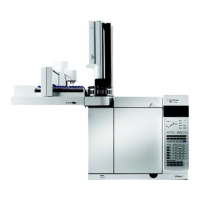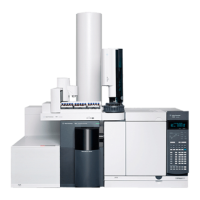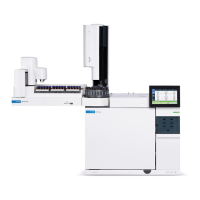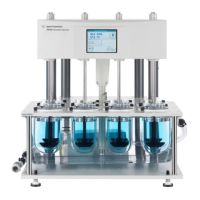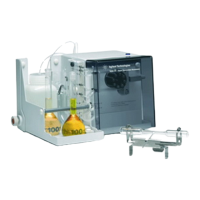Chromatographic Symptoms 3
Agilent 7890 Series Troubleshooting 53
• Clean or replace the inlet seal.
• Check adapters (if installed) and liner for solid particles. If
solid particles are visible, clean or replace.
• For capillary splitless injection, consider compatibility
between the solvent and column.
• Use a different solvent. This will help in instances where
there is more tailing for the early eluting peaks or those
closest to the solvent front.
• Use a 3 to 5 meter retention gap.
• Verify that the injection technique is adequate. This is
usually related to erratic plunger depression or having
sample in the syringe needle.
• Verify the inlet temperature.
• If the temperature is too high, tailing is generally worse
for early eluters. Decrease inlet temperature by 50 °C.
• If the temperature is too low, tailing usually increases
with retention. Increase inlet temperature by 50 °C.
• Check for dead volume in the system. Check for correct
column installation at both ends.
• If peak tailing decreases with retention time, reduce dead
volume in transfer line connections, fused silica unions,
and so forth.
• A column installed too high into a detector or inlet can
create dead volume areas.
• Inspect any transfer lines for cold spots. Cold spots cause
tailing that usually increases with retention time.
NPD Peak Tailing
For NPD, do the following:
• Verify that you are using the correct bead for the sample
being run. If you are analyzing phosphorus, install a black
bead. White beads can cause peak tailing when phosphorus
is being analyzed.
•
Verify that the correct jet is installed. Use an extended jet.
• Replace the ceramic insulators.

